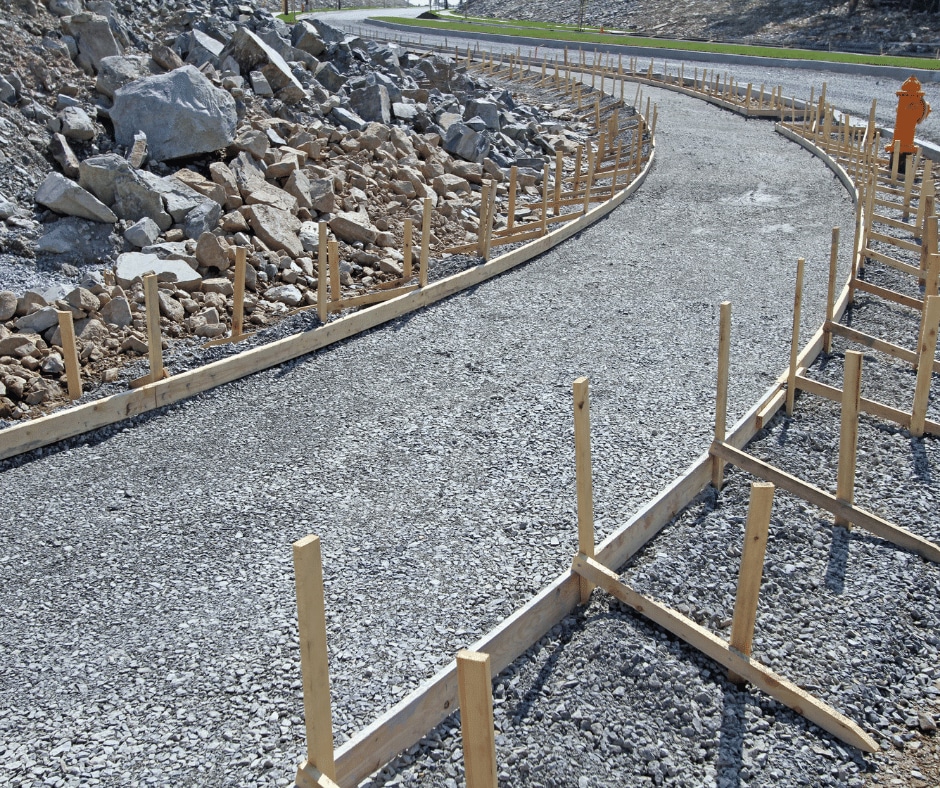Concrete Sidewalks
A concrete sidewalk is a paved walkway made of concrete, typically leading from one building to another or connecting two streets. Concrete is a composite material consisting of aggregate, cement, and water. It is one of the most commonly used construction materials in the world. The benefits of concrete sidewalks include durability, low maintenance, and a variety of design options. Concrete sidewalks can last for decades with proper care and maintenance. They are also very easy to clean and are not susceptible to damage from weather or other environmental factors. In addition, concrete sidewalks can be customized to match the surrounding landscape and architecture. For these reasons, concrete sidewalks are a popular choice for both residential and commercial applications.
How Does a Professional Pour a Concrete Sidewalk?
When you hire a professional to pour a concrete sidewalk, you can rest assured that the job will be done correctly. The first step is to excavate the area where the sidewalk will be located. This involves removing any grass, weeds, or other vegetation, as well as any loose soil or rocks. Next, the area will be graded and leveled so that it is smooth and level. Once this is done, forms will be installed around the perimeter of the area. These forms help to shape the concrete and prevent it from spreading out too much. Once the forms are in place, the concrete will be mixed and poured into them. After the concrete has had time to set, the forms will be removed and any excess concrete will be cleaned up. Finally, the new sidewalk will be sealed to protect it from the elements. By following these steps, you can be sure that your new sidewalk will last for many years to come.
How Does a Professional Repair a Sidewalk?
Professional sidewalk repair companies use a variety of techniques to repair damaged sidewalks. The most common method is to use a concrete grinding machine to remove the damaged section of concrete. After the damaged area has been removed, a new layer of concrete is poured and smoothed out. This method is often used for small repairs, such as cracks or potholes. For larger repairs, such as replacing an entire section of the sidewalk, the company will first need to dig out the old concrete. Once the old concrete has been removed, a new layer can be poured and smoothed out. The key to a successful repair is to ensure that the new concrete matches the surrounding sidewalk in both color and texture. Otherwise, the repair will be easily noticeable and may not last as long as hoped.
How Is a Concrete Sidewalk Resurfaced?
The process of resurfacing a concrete sidewalk is fairly straightforward. First, any cracks or holes are filled in with a patching material. Next, a thin layer of concrete is applied over the entire surface. Finally, the new concrete is textured to match the surrounding surface. The entire process can usually be completed in a single day, and the new sidewalk will be ready for use soon after it dries. Resurfacing a sidewalk is an efficient way to extend its lifespan and keep it looking its best. Not only does it repair the damage, but it also provides a fresh surface that will be easier to clean and maintain. As a result, resurfacing is an ideal solution for busy sidewalks that see a lot of traffic.
How Thick Should a Concrete Sidewalk Be?
A concrete sidewalk is a necessary part of any home or business. It provides a safe and level surface for pedestrians to walk on, and it can also help to improve the curb appeal of a property. But how thick should a concrete sidewalk be? The answer depends on a number of factors, including the intended use of the sidewalk, the climate, and the subgrade conditions. In general, sidewalks should be at least four inches thick. However, in areas with heavy foot traffic or extreme weather conditions, it may be necessary to increase the thickness to six inches or more. In any case, it is important to consult with a professional before pouring a concrete sidewalk to ensure that it will be able to handle the expected wear and tear.
Do I Need Gravel Under a Concrete Sidewalk?
While gravel is not strictly necessary for a concrete sidewalk, there are several reasons why you might want to consider adding it to the mix. Gravel can help improve drainage and prevent pooling, especially in areas with high rainfall or frequent flooding. It also helps to promote better curing by providing additional support for the concrete as it sets. In addition, gravel can provide a finished look that compliments other hardscaping features in your yard. Ultimately, the decision of whether or not to use gravel under a concrete sidewalk is up to you. However, it’s worth considering the potential benefits before making a final decision.

